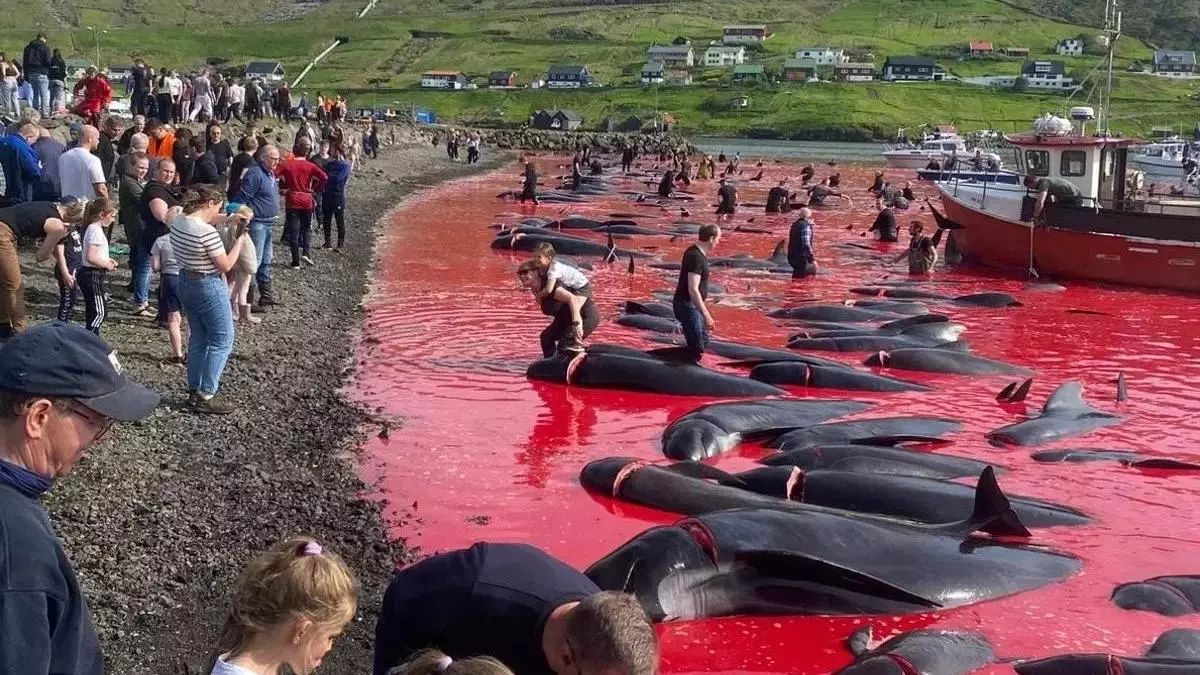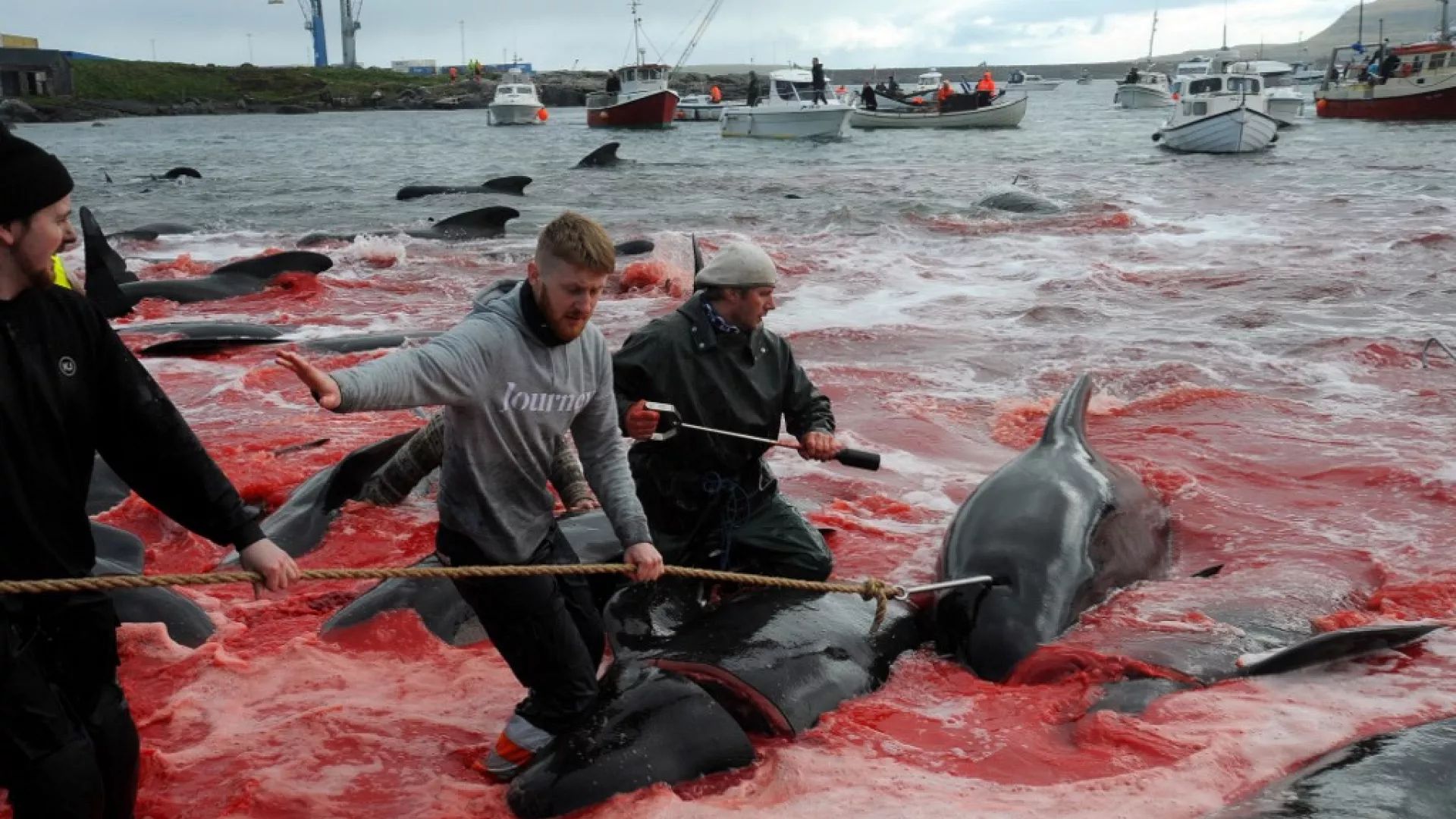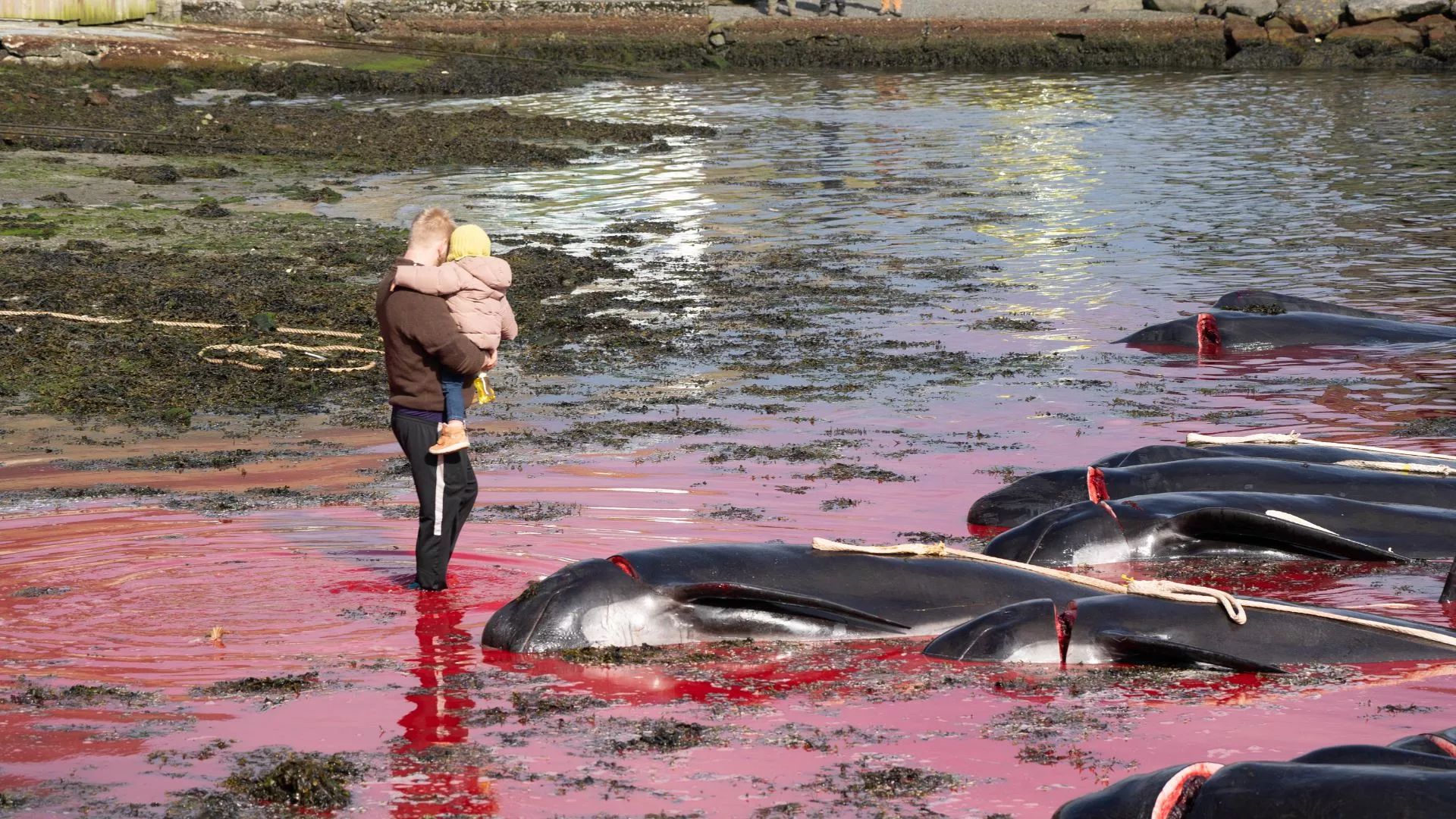
- In the Faroe Islands, an archipelago in the North Atlantic under Danish control, hundreds of cetaceans – usually more than a thousand – are killed each year. Some call it "tradition" because of its centuries of antiquity. But the known and viral images of hundreds of dolphins and whales wounded on the blood-red beach make it increasingly difficult to justify this “habit”.

In response, an international campaign is underway to boycott the Faroese fishery while these practices continue. Paul Rivas reports on the research carried out by the Paul Watson Foundation and the animal defense organization ARDE in El Salto. It connects nine supermarkets and the fishing industry in the Spanish state with this bloody practice.
"Cod from the Faroe Fishing Zone is sold by the nine main supermarkets in Spain and seven of them - Alcampo, ALDI, Mercadona, Carrefour, Consum, DIA and Lidl - with their white label," said Julia Elizalde, spokeswoman for ARDE. The list consists of El Corte Inglés and Eroski. The brands they sell include Alkorta, Aligator, Angomar, Dimar and Pescanova.
Both groups make it clear that there is no doubt about the link between the massacre and the Faroese fishing sector. "The companies that fish there are actively involved in whale and dolphin hunting," says Elizalde. This is where the call for boycotts comes from.

This unnecessary “habit”
is called the “Grindadráp”, and mostly they kill pilot whales, North Atlantic dolphins and Atlantic white wing dolphins. In short, this is the case: fishing boats begin to harass cetacean groups to take them to coves and beaches. There are people waiting for them, with a rope hook in their hand, to enter the spire –the breathing hole– and thus attract the cetaceans to the shore. Once they approach the arena, they cut their spinal cord with knives. The process ends when another person cuts off the back of your neck to cut off the two most important blood vessels. And so, bleeding, they kill dozens or hundreds of animals.
The European Union and the member states of the International Whaling Commission in 2021 called on the Government of the Lighthouses to "immediately stop the obsolete whale and dolphin hunting". That year, 1,428 cetaceans were killed in a single day. However, they ignored it and last January 10th they did the first Grindadráp of this year.
"In the beginning, it could have made sense centuries ago. The success rate for catching animals was much lower and it was one of the few food sources available to those who lived on the islands," says Cristina Gimeno of the Watson Foundation. Today, however, "it makes no sense" and recalls that the Faroes are one of the places in the world with the highest per capita income, with an unemployment rate of around 1%. “They don’t need to do that.”
